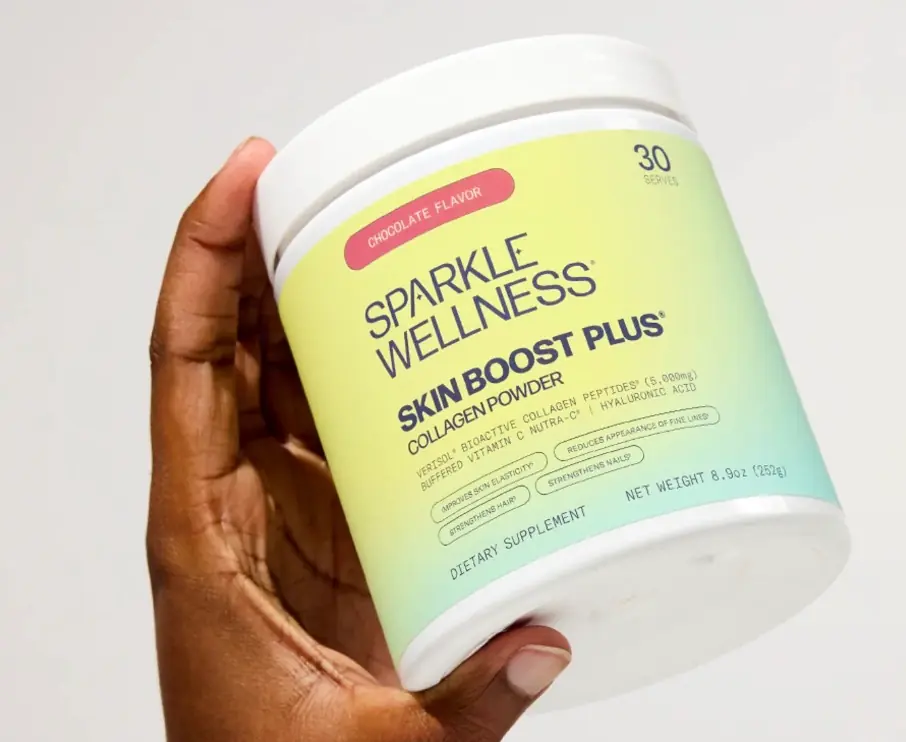For all of us keenly interested in what Dr Rhonda Patrick has to say about health, it’s also fascinating to hear her scientific take on pregnancy and raising an infant.
In this post we’re going to look at a number of things, including:
- Supplements Rhonda took whilst pregnant
- Substances Rhonda avoided during pregnancy
- Rhonda on breastfeeding
- Vaccines – how she’s handling them for herself (TDAP) and her child
- On exercise, and beating depression after pregnancy (often referred to as postpartum depression)
- Products Rhonda used, such as baby monitors, smart weighing scales, etc.
- Rhonda on the epigenetics of obesity (or how our physical health at the time of conception actually affects the babies genetics)
I’ve learnt a number of useful things from writing this post, and hope you will too.
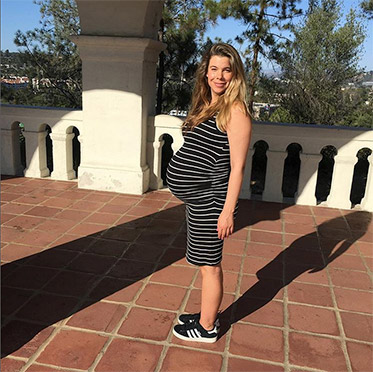

Supplements Rhonda took whilst pregnant & breastfeeding
I’ve previously discussed Rhonda’s day-to-day supplementation in this long post on her supplements. However, whilst she was pregnant and breastfeeding she made a lot of changes to her supplementation. We’ll look at these details below.
First & Second Trimesters
Rhonda’s regular supplement regime contained products such as Lion’s Mane mushrooms and Nicotinamide Riboside that haven’t been tested in pregnancy women. Therefore to maintain absolute safety, Rhonda removed all these supplements from her diet whilst pregnant, and only used the following:
- Multivitamin – Thorne – Basic Prenatal – 3 capsules/day
- Fish Oil – Norwegian Pure-3 DHA – 2 grams/day †
- Vitamin D – Thorne – D3 1,000 IU – 2 capsules/day (total of 3,000iu per day, including the 1,000iu of D3 from Thorne Prenatal)
Third Trimester
- Rhonda continued using the products above, and added Visbiome probiotics – 1 sachet/day (Visbiome was created by the same person as VSL #3, has a similar formulation, and typically costs less). She didn’t take probiotics first or second trimester.
- Her third trimester blood test results came back showing iron deficiency, so she added an extra iron supplement: Thorne – Iron Bisglycinate. This won’t be necessary unless your blood test results indicate low levels. The prenatal multivitamin already contains 45mg of iron bisglycinate.
- Rhonda increased her Wild Alaskan Salmon Roe intake to daily (source) – on the basis that in the last 13 weeks of pregnancy, the babies brain triples in weight, and the cerebellum (involved in motor control) increases surface area by 30x.
So by consuming the salmon roe, she provides her baby with a good source of phospholipid DHA (absorbed 10x better in the developing brain than regular DHA), and DHA is one of the major components of the brain. Rhonda buys her salmon roe in bulk from Vital Choice. See the section below for info around safety & amount to consume. - She also increased her fish oil supplementation from 2 grams per day to 3 grams †
Breastfeeding Supplement Regimen*
- Multivitamin – Thorne – Basic Prenatal – 3 capsule/day
- Fish Oil – Norwegian Pure-3 DHA – 3 grams/day †
- Probiotics – Visbiome Probiotic – 1 sachet/day
- Vitamin D – Thorne – D3 1,000 IU – 5 capsules/day (6,000iu of vitamin D per day total, including the 1,000iu of D3 from Thorne Prenatal)
- PQQ (Pyrroloquinoline Quinone) – Life Extension – PQQ – 20 mg – 1 capsule/day
- Vitamin K2 – NOW K-2 MK7 – 100 mcg – approximately 3 capsules/week
*The source for Rhonda’s breastfeeding supplement regimen is 1hr 38mins into her Oct 2017 Members Q&A.
† The source for the fish oil doses Rhonda took during pregnancy and breastfeeding was her May 2019 Crowdcast at the 41 minute mark. Members of her site can access this via the dashboard. A clip of the specific section is below:
If you’re looking to find something comparable to NPure-3 fish oil, the breakdown of its omega-3 content is as follows:
| Amount | Total Omega-3 | DHA | EPA | DPA + Others |
| 1 gram (1 capsule) | 850 mg | 500 mg | 200 mg | 150 mg |
| 2 grams (2 capsules) | 1700 mg | 1,000 mg | 400 mg | 300 mg |
| 3 grams (3 capsules) | 2,550 mg | 1,500 mg | 600 mg | 450 mg |
This image contains the breakdown of the NPure-3 High DHA product.
Whilst the NPure-3 website is closed at the time of writing, you can also cross-check the nutrition breakdown by viewing older versions of their website on WayBack Machine.


Toddler Supplements – For a list of the supplements Rhonda is giving to her growing toddler, see this separate post.
Omega-3 Fish Oil During Pregnancy
As mentioned above, Rhonda was keen to maintain high levels of Omega-3 supplementation throughout her pregnancy and while breastfeeding.
A growing body of research suggests that higher levels of DHA during pregnancy is associated with improved brain development. For example, the study Rhonda tweeted below:
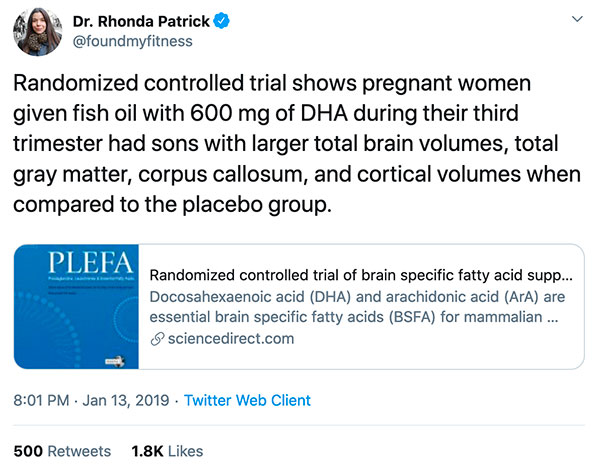
The omega-3 supplement she opted for is made by NPure-3 who ship internationally from Norway. It is touted as being high quality, with low levels of total oxidation (TOTOX).
However, due to supply issues with that product, as of October 2024, Rhonda is currently taking Metagenics OmegaGenics EPA-DHA 2400mg liquid fish oil (see 20% off coupon code).
Each bottle contains 30 servings of ~1 gram of DHA and 1.4 grams of EPA.
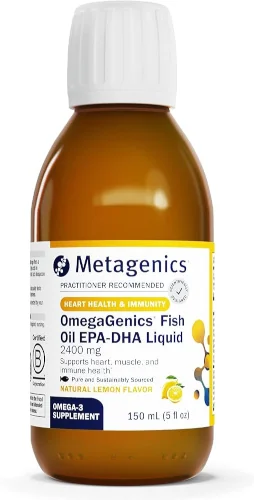
Multivitamins During Pregnancy
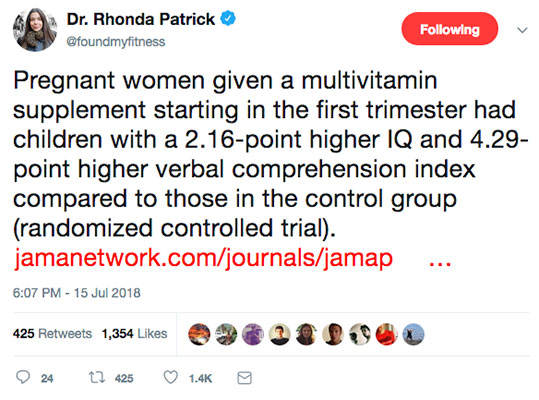
(It’s worth noting with the above study, that it was performed on people in rural China. It’s possible they were already mildly deficient in micronutrients, thus the multivitamin supplement had a noticeable impact on their children’s IQ. That being said, we know that even in developed countries like the USA, segments of the population are mildly deficient in essential micronutrients, so the study still holds value. What has not been proven is that a multivitamin could improve IQ where no deficiency exists).
Research has shown that pregnant women need more of certain nutrients than they would otherwise. Rhonda opted to use the multivitamin Thorne – Basic Prenatal. This has a number of key benefits:
- Supplementation of folic acid reduces the risk of having a child born with brain of spinal cord birth defect1Multivitamin/Folic Acid Supplementation in Early Pregnancy Reduces the Prevalence of Neural Tube Defects – Milunsky et al. (1989). Basic Prenatal uses the methylated form of folate (5-MTHF), which is optimal even for those with an MTHFR mutation that makes them less efficient at utilizing folic acid. Actually, for those women with the aforementioned MTHFR mutation, neural tube defects are a bigger risk than normal2Association between MTHFR C677T polymorphism and neural tube defect risks: A comprehensive evaluation in three groups of NTD patients, mothers, and fathers – Yan et al. (2012)
- As well as using an optimal version of folic acid, Basic Prenatal also uses a well absorbed version of iron, iron bisglycinate, which meets a pregnant woman’s need for increased iron, whilst being easy on the stomach and non-constipating.
- It contains several of Basic Prenatal’s ingredients (including vitamin C, vitamin B6, and vitamin K) have been demonstrated to benefit “morning sickness”.
- Lastly, it doesn’t contain any additives like stearates, colorants or preservatives – unlike some mainstream prenatal supplements.
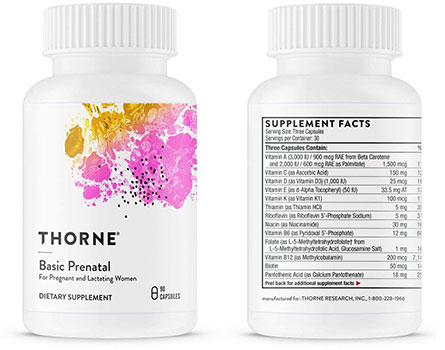
Probiotics
Rhonda began taking 1 sachet of Visbiome probiotic per day at the start of her third trimester, and continued taking it whilst breastfeeding (source via her Instagram).
A study found that mothers supplementing Visbiome during late pregnancy and, while breastfeeding, decreased inflammatory biomarkers in the breast milk and improved symptoms of colic in their newborns.
Rhonda talks about how the bacteria in other probiotics are often dead by the time we consume them. Visbiome gets shipped in cold packs, to preserve the live cultures. It uses same formula as VSL#3 did when it was highly studied. Unfortunately since VSL#3 was bought by another company, they’ve stopped using the original formula. Rhonda uses the sachets (450 billion bacteria per packet), rather than the pills (112.5 billion bacteria).
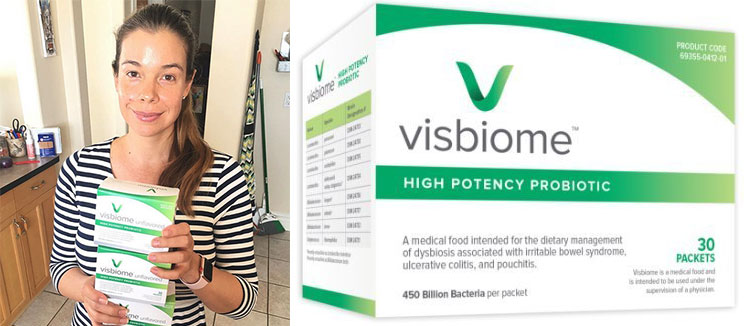
Wild Alaskan Salmon Roe
Rhonda has been eating salmon roe as a snack since at least early 2016 (where she posted about it on Instagram). However, in her third trimester of pregnancy she deliberately stepped up her consumption to daily (source).
Salmon Roe (raw fish) Safety?
Raw fish (such as found in sushi) is always at risk of parasite contamination. Getting sick from this normally would be no fun, but getting sick whilst pregnant is a risk to the child. For that reason many women exercise caution around raw fish whilst pregnant. Rhonda explains that if salmon roe is at -4°F for at least 7 days it kills any parasites that may be present, and commercial freezing of the roe is typically at -35°F (source). The particular company Rhonda buys from Vital Choice, who ship the roe in quarters, frozen in dry ice. It can then be stored in the freezer, and one quarter thawed and used at a time.
How much Salmon Roe to consume?
Rhonda hasn’t publicly mentioned how much salmon roe she aimed to consume per day whilst pregnant, but we can infer from her salmon roe stacks video, where she specifies 1 tablespoon for the recipe, that she was consuming at least this much per sitting. In her Instagram pictures of avocado topped with salmon roe (link & link), it looks closer to 2 tablespoons, 1 per avocado halve. 1 tablespoon of salmon roe is around 14g (1/2 oz).
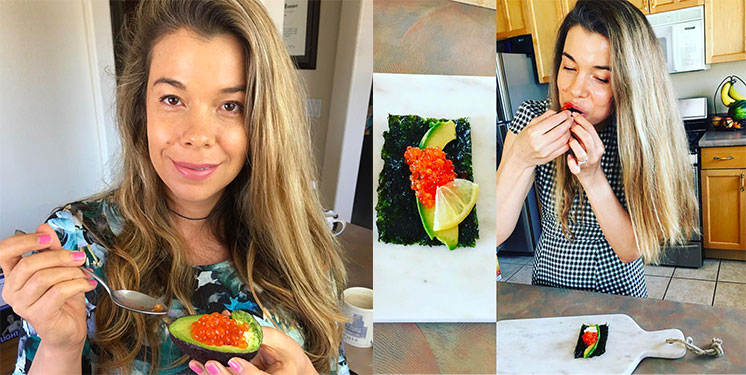
Salmon Roe Benefits Recap
- It contains concentrated quantities of omega-3 DHA & EPA in phospholipid form. This is the form of DHA that’s best taken up by the brain (and the developing fetal brain). It has been shown that DHA in phospholipid form accumulates 10x higher in a developing brain compared to non-phospholipid form.
- Compared to fish, which contain between 1% and 1.5% phospholipids, Fish roe (fish eggs) from herring, salmon, pollock, and flying fish contain between 38%–75% of their lipids in the form of phospholipids3Marine Omega-3 Phospholipids: Metabolism and Biological Activities – Lena Burri et al. (2012).
- Salmon roe is also high in astaxanthin, which gives it the pink color. Astaxanthin supplementation all by itself has been shown in humans to improve immune function while decreasing an important marker of inflammation known as C-Reactive protein. Astaxanthin also reduced DNA damage, hyperlipidemia, and oxidative stress by suppressing lipid peroxidation and increased HDL.
Vitamin D3 Supplement for Babies
The breast milk of healthy women contains relatively small amounts of vitamin D and is usually considered insufficient to prevent vitamin D deficiency in exclusively breastfed infants if sunlight exposure is limited. Therefore Rhonda opted to supplement her babies vitamin D intake with Carlson Baby’s Super Daily D3 (400iu per drop/daily rather than the 4,000iu in the adult version). See more via her Instagram post on Carlson Baby’s Super Daily D3 for more info.
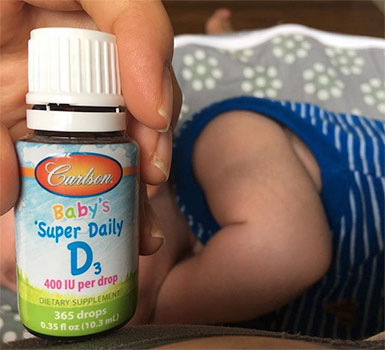
Substances Rhonda avoided during pregnancy
During pregnancy Rhonda took all the regular precautions women take. Such as avoiding caffeine, alcohol and smoking (not that she normally smokes). In addition Rhonda also avoided:
- Acetaminophen, which has been linked to ADHD when taken by pregnant mothers4Associations between Acetaminophen Use during Pregnancy and ADHD Symptoms Measured at Ages 7 and 11 Years – Thompson et al. (2014)5Acetaminophen in pregnancy and future risk of ADHD in offspring – Blaser et al. (2014)
- Broccoli sprouts – Rhonda normally takes these each week for their sulforaphane content, but due to the risk of bacteria growing on the seeds whilst they are germinating, she completely stopped consuming them whilst pregnant.
- Any supplements she was formerly taking that may be a risk to the developing child; such as lion’s mane mushroom, nicotinamide riboside, GPC choline.
- Lastly, if one is on any medications, it’s worth digging deep into whether or not that could have any effect on the pregnancy. For example, mothers who (unknowingly) took regular medication they were prescribed, that interfered with folic acid utilization, increased the risk of neural tube defects, cardiovascular defects, oral clefts and urinary track defects.6Folic Acid Antagonists during Pregnancy and the Risk of Birth Defects – Hernández-Díaz et al. (2000). Interestingly those who took these medications and who supplemented multivitamins containing folic acid reduced their risk of birth defects (except for antiepileptic drugs, where supplementation didn’t improve things). Some of the drugs that affect folic acid uptake were trimethoprim, triamterene, carbamazepine, phenytoin, phenobarbital, and primidone.
Sauna Use
Rhonda explained on Peter Attia’s podcast (see 1hr 24m) that she found out she was pregnant whilst touring Finland and trying out saunas there.
(If you didn’t know already, Finland has a culture of sauna use, and a lot of the research Rhonda cites on saunas was done there)
However, that was right at the very start of her pregnancy, and once she left Finland she didn’t use a sauna for the rest of her pregnancy.
For example, the American College of Obstetricians and Gynecologists warn against using saunas during pregnancy.

Rhonda on breastfeeding
After researching the benefits of it, Rhonda made sure to breastfeed. In her podcast discussion on JRE #1054, she mentions how her son had a bit of a tongue tie, making it difficult for him to latch on and breastfeed initially. She was close to giving up at that point, and it really drove home for her how difficult breastfeeding can be for new mothers. If she hadn’t known about all the scientific benefits of breastfeeding, she said she may have given up.
A couple of the amazing benefits of breastfeeding Rhonda points out are:
- Human breast milk contains special carbohydrates known as ogliosaccharides, which are largely indigestible by human infants7Human Milk Oligosaccharides: Evolution, Structures and Bioselectivity as Substrates for Intestinal Bacteria – German et al. (2010). Rather than being used for energy or growth, the carbohydrates pass through into the gut, and provide fuel (pre-biotics) for certain bacteria, including Bifidobacteria longum biovar infantis. One function of Bifidobacteria longum appears to be its ability to shorten the duration and minimize the severity of symptoms associated with the common cold8Effect of Lactobacillus gasseri PA 16/8, Bifidobacterium longum SP 07/3, B. bifidum MF 20/5 on common cold episodes: A double blind, randomized, controlled trial – Vrese et al. (2005). So effectively humans and bacteria have co-evolved to make this possible
- In addition to the nutritional composition of breast milk, it also contains a range of stem cells. It’s not known in detail the benefits of these stem cells, but one possible role includes:
[stem cells] could be involved in the development of the enteric nervous system, which is one of the main parts of the nervous system. […] Non-breast-fed premature born infants show a significantly higher risk of developing diseases like infantile diarrhea and necrotizing enterocolitis.9Cells of human breast milk – Witkowska-Zimny et al. (2017)
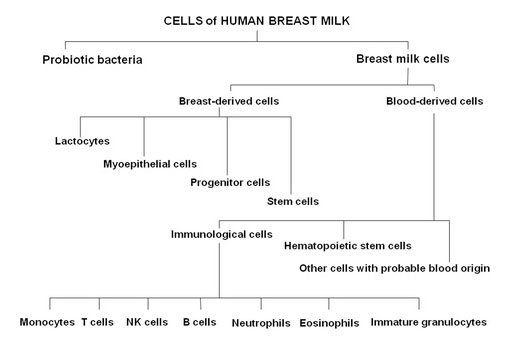
Crazy cool image above showing the wide-ranging constituents of human breast milk. It’s a great thing that babies can survive on “infant formula” (break milk replacement), as a last resort. But you’ve got to imagine the baby is missing out on all these cells and bacteria that human breast milk contains.

^ Short video clip of Rhonda discussing the benefits of breastfeeding
Vaccines
When it comes to vaccines, there are those a mother takes whilst pregnant, and those given to the young born baby. In this section we’ll cover Rhonda’s thoughts on both of these.
On The Baby’s First Vaccines
During Rhonda’s JRE #1054 podcast with Joe Rogan they get on to the potentially controversial topic of vaccines. Both are pro vaccination, but with caveats. They express concern over the number of vaccinations that are given to children in a short space of time. Rhonda explains how it was expected her baby receive 5 vaccines in one visit to the doctors, and she had concern that this was a lot for the still developing babies immune system. Therefore, both Rhonda and Joe had opted to do their children’s vaccines in singles. Doing it that way is more time consuming, because it means more trips to the doctors and “wasted time”, however, they did it this way in order to reduce the burden on the childs developing immune system. Allowing the child to rest and recover after each vaccine.
Joe explains that the reason “the whole vaccine thing” isn’t black and white, is because people react to things differently. One person can eat a single Brazil nut, have a severe allergic reaction, and potentially die if they don’t get medical intervention. Whereas another could eat a whole bowl, and just get bored with them in the process. No adverse affects.
Rhonda then goes on to say that there is a new field of inquiry in trying to understand the interaction between genes, vaccines and the immune systems response.
On Vaccines Whilst Pregnant
In the JRE #1054, Rhonda discusses studies in non-human primates, which looked at what happens when they induce a strong immune response in pregnant monkeys. The result is that when their babies were born, they had autism like behaviours10Maternal Immune Activation in Nonhuman Primates Alters Social Attention in Juvenile Offspring – Machado et al. (2014).
Similarly, its been shown that mothers of autistic children are more likely to have antibodies floating around in their blood against fetal brain proteins11Antibodies against fetal brain in sera of mothers with autistic children – Singer et al. (2007). In the study, there were two groups; mothers with, and mothers without autistic children. And it was only in the mothers with that these fetal brain antibodies were found. As you can imagine, there is no reason fetal brain antibodies should be found in a mothers blood.
So to summarise what this potentially means. It’s not that vaccines themselves are bad, but the immune system response they solicit, in a small number of humans, can cause the mother’s white blood cells to mistake the baby as a threat, and cause damage to it. Both how and why may happen is not clearly understood. It’s plausible that in the future we will be able to narrow down the genetic signature of those who may be at risk, but that’s some ways off.
Tdap Vaccine
Tdap is a vaccine for tetanus, diphtheria and pertussis (aka whooping cough) that is given to women between 27 and 36 weeks of their pregnancy. The idea is that by vaccinating the mother, she will pass her immunity on to the unborn child, such that when they are born, they will already have immunity to the aforementioned illnesses.
Rhonda actually opted to get the Tdap vaccine 1 day postpartum (after chid birth), such that the antibodies would be passed on to her child via breast milk. This avoided the risk of the Tdap causing a strong immune response in her body, that could have affected her unborn child.

^ Short video clip of Rhonda discussing how she vaccinated her child, and her approach to the TDAP vaccine
Flu Vaccine
Rhonda opted out of the flu vaccine whilst pregnant, in part because she rarely gets the flu, so it was an easy decision (source: Rhonda’s July 2017 members Q&A).
Exercise & Postpartum depression

^ Rhonda at the spinning (stationary bike) studio – source
Postpartum depression (depression after giving birth) is a common issue for new mothers to contend with. Rhonda describes a number of factors that can come together to cause postpartum depression:
- Women’s estrogen levels go dramatically higher compared to baseline. Estrogen has been shown to increase the expression of a gene that codes for tryptophan hydroxylase 2 in the brain, which then produces serotonin from tryptophan. So whilst pregnant you’re making a lot of serotonin. And then, after you have the baby, that elevated serotonin goes away. So there’s a withdrawal to deal with.
- Secondly, after the pregnancy your circadian rhythm is off. Due to sleep disruption and potentially not getting enough bright light exposure during the day. Rhonda says she barely went outside in the first 2 weeks.
- Lastly, to add to all this, there are all the extra stresses of caring for a newborn baby.
To combat the above, Rhonda worked hard to make sure she was getting exercise as soon as she could. She explains that exercise, in this context, is good for a variety of reasons:
1) Exercise has been shown to get serotonin into the brain
Branch chain amino acids (found in proteins) can out compete tryptophan to get into the brain. So if you’re not exercising, you’re constantly getting the branch chain amino acids in the brain (which are serving other important roles), but you’re not getting the tryptophan, so you’re not getting the precursor that makes serotonin. Exercise alleviates that competition, branch chain amino acids get taken up in the muscle (where they’re used to help build muscle, which is good) and the tryptophan gets into the brain, so you’re making serotonin.
2) When you’re exercising you’re making endorphins
The word endorphin contains two parts; endo and orphin, short forms of the words endogenous and morphine – intended to mean “a morphine like substance, originating from within the body’. The main function of endorphins is to inhibit the communication of pain signals. This can result in a euphoric feeling, similar to that produced by opioids like morphine.
3) Exercise increases the production of new neurons
This works via increases in serotonin and brain derived neurotrophic factor (BDNF). This process of making new neurons (neurogenesis) has been shown to alleviate depression (and stave off brain ageing).
Four weeks after giving birth Rhonda attempted her first jog.
Prior to giving birth, running was one of her favourite ways to exercise and relax.
However, whilst she was jogging she felt the sensation of needing to go to the bathroom, and even after going, the feeling wouldn’t go away. She went to the doctor, and they explained that this is likely down to the childbirth, and given time + exercises to strengthen the pelvic floor muscles, it would fix itself.
Not wanting to wait until then, Rhonda took up spinning classes. Which gave her an alternative high intensity form of exercise, without running (excuse the pun) into the same issues.
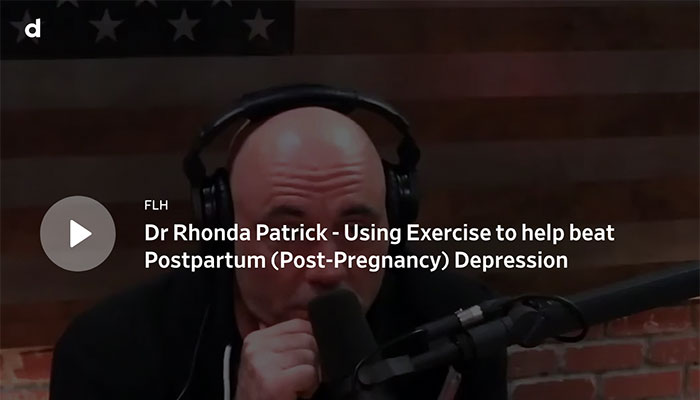
^ Short video clip of Rhonda discussing how she used exercise to beat postpartum depression
Baby Products Rhonda Used
Below we will take a look at some of the products Rhonda used for her new born baby. The source for many of these products came via a Patreon post which Rhonda sent to her subscribers (patreon link or image). Another great reason to support Rhonda on Patreon if you don’t already!
The products are:
- Owlet Smart Sock – a hypoallergenic cotton sock that sits on the babies foot and monitors its vitals – while it’s at an age where sudden death infant syndrome is still a risk
- Nanit Smart Baby Monitor – used to monitor your baby visually from your phone, in another room
- Hatch Baby Grow Smart Scale – helps parents to track their babies growth and weight without relying on trips to the doctors
I’ve written more on each of these below – just click the boxes to expand each section.
Owlet Smart Sock
The Owlet Smart Sock (now called Owlet Dream Sock) a hypoallergenic cotton sock that sits on the babies foot and monitors its vitals. Linked to the owlet app on your phone, it will notify you if there is a problem with your babies heart rate or blood oxygen levels. There is also an alarm at the base station, so that if you’re not with your phone, but are in proximity, you’ll still hear the base stations alarm.
The manufacturers don’t advertise this as a method of guarding against sudden infant death syndrome (SIDS), in part because the exact causes of SIDS are still undefined, but you could imagine this might provide a potential window of opportunity if the childs vitals drop during sleep. And for new parents, who are tired and want to relax, the Owlet Dream Sock could be a method of gaining some peace of mind whilst resting.
| Pros | Cons |
|
✅ When it works (see cons), this is a smart system to monitor your babies vitals, and gain peace of mind ✅ Alarm on the base station, in case you’re not getting your phones notification ✅ Compatible with Android phones, as well as iPhones. 18 hour battery per 3hr charge on the sock |
❌ Users have reported issues with false alarms. Although some of these were down to faulty units that then got replaced, or the sock not being correctly fastened. ❌ High price at $299 for the 3x socks, base station & app, arguably you’re paying a high price for peace of mind ❌ Amazon reviews suggest that the communication between smart sock and phone app goes through Owlet servers. The downside of this is that if the servers go down, which they have done in the past, you won’t get notifications |
As I was researching this product I noticed there is another comparable product in the market; the Snuza Hero. It’s 1/3 the price ($100), and less technically sophisticated than the Owlet Smart Sock. Essentially you tuck it in to the babies nappy, and it monitors abdominal movement. If there’s no movement for 15 seconds it vibrates (presumably to “wake” the child), and if there’s no movement for 20 seconds, it sounds an alarm (adjustable in volume). Like with the Owlet, there are some reports of false alarms, but overall the Snuza Hero seems like a good, lower budget, device.


Nanit Smart Baby Monitor
Whilst a baby monitor like the Owlet Smart Sock is there for checking the babies vitals, the Nanit Smart Baby Monitor can be used to monitor your baby visually. It communicates wirelessly with your smart phone, so that you can see video and audio of your baby in its crib.
The design of the camera mount means that it sits above the crib, and thus you can see everything that’s going on. There are some monitors that don’t have a mount, and thus it may be hard to position them over the crib for an optimal view (although it may be possible, depending on the layout of your crib and other furniture).
The Nanit Smart Baby Monitor (~$300) comes by default with a crib sized mount (5.5′) that needs to be fixed (driled) into the wall. If you want something more flexible that you can move to different locations, they do sell a floor stand that is an optional extra (~$80). Similarly, if you want a stand that can be placed on shelves/counters – they sell the Nanit Multi Stand (~$50).

| Pros | Cons |
|
✅ The camera comes on a stand with enough height to look down over the babies crib, giving you the optimal view. ✅ You can setup push notifications to your phone on sound or movement, so that you don’t have to keep watching the video to see if your baby wakes up ✅ If the internet goes down, the Nanit can switch to streaming on your internal wireless network ✅ App access can be shared with care givers, so they’re on the same page ✅ Clear and high quality video, even in darkness |
❌ Reports of connection dropouts between the monitor and your phone. Likely some of this is down to user error or phone software… but still, not good in any capacity if you’re relying on this for child safety. ❌ A high price compared to some of the other video/audio monitors on the market, at around $299. However, it is generally of higher quality. |
Hatch Baby Grow Smart Scale
The Hatch Baby Grow Smart Scale is designed so that parents can track their babies growth and weight without relying on trips to the doctors. The Hatch was actually created because the founder had issues with breastfeeding, and was worried that her child wasn’t a healthy weight. She and her husband wanted a way to track this without having to go back and forth to their doctor for measurements.
As with smart devices, the Hatch Baby Grow Smart Scale is linked to your phone, so that as you use it, you will build up a history of your childs weight growth. The device measures down to 0.25 ounce, allowing you to track exactly how much milk your child is consuming.
| Pros | Cons |
|
✅ It provides reassurance in the early days of breastfeeding ✅ Automatically tracks your child’s weight change in the app ✅ Wipes clean when things get messy, no changing pads to wash |
❌ Some units have had measurement reliability issues (according to Amazon reviews) |

Epigenetics of Obesity
If you’re read this far, then there’s a good chance that you or someone you know is already pregnant / raising a child. However, for those who plan to have (more?) children in the future, this section may be of interest. On JRE #1054 Rhonda discusses (video below) how parents’ lifestyle affects the genes that are passed on to their children.
Whilst our DNA remains the same throughout our lives, the DNA that gets “expressed” (becomes active), will vary based on our environmental conditions.
What we’re now learning is that parents pass on epigenetic changes to their offspring.
In a 2016 study, scientists compared 23 overweight men with 44 normal weight men. They found that the DNA in the overweight men’s semen was uniformly affected in key places, compared to those at normal weight12Obesity-related DNA methylation at imprinted genes in human sperm: Results from the TIEGER study – Soubry et al. (2016).
If, like me, you want to know a bit more about what exactly this epigenetics thing is, I can recommend this youtube video for the basics. In a nutshells, epigenetic changes are changes in the DNA that gets used by your cells (Image that your cells have a lot of DNA code, and not all is being used (expressed) at any one time). Epigenetic changes, in practice, are two things. Firstly there is a kind of spool (histone) that DNA winds around. Tightening or loosening the spool results in an epigenetic change. Secondly, DNA molecules can be “methylated” (little methyl groups like CH3 getting added to the DNA). Methylation represses the expression of DNA function that it binds to – which is also an epigenetic change.

^ Short video clip of Rhonda discussing how parent’s health at conception affects their children
Final Thoughts
Ok, so all the above if a lot of information to take in. Hopefully you’ve found some of it useful. In case they’re of value, here are some further posts I’ve written on Dr Rhonda Patrick related content:
- Supplements Rhonda gives to her growing toddler (link)
- Detailed post on Rhonda’s diet – including examples of her breakfast, lunch and dinner (link)
- Comprehensive list of supplements that Rhonda has discussed taking, some daily, some for specific use-cases (link)
- Rhonda’s approach to exercise, and the science around different types – e.g. aerobic vs anaerobic vs weight training (link)
References
- 1
- 2
- 3Marine Omega-3 Phospholipids: Metabolism and Biological Activities – Lena Burri et al. (2012)
- 4
- 5Acetaminophen in pregnancy and future risk of ADHD in offspring – Blaser et al. (2014)
- 6Folic Acid Antagonists during Pregnancy and the Risk of Birth Defects – Hernández-Díaz et al. (2000)
- 7
- 8
- 9Cells of human breast milk – Witkowska-Zimny et al. (2017)
- 10Maternal Immune Activation in Nonhuman Primates Alters Social Attention in Juvenile Offspring – Machado et al. (2014)
- 11Antibodies against fetal brain in sera of mothers with autistic children – Singer et al. (2007)
- 12

